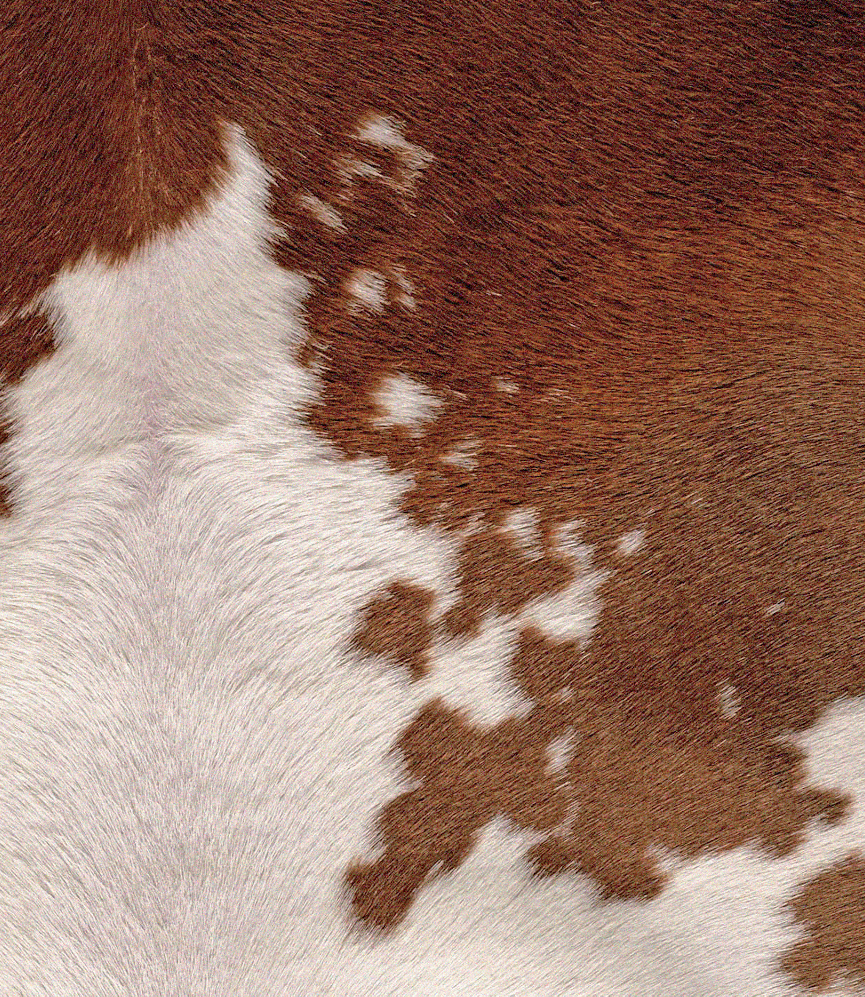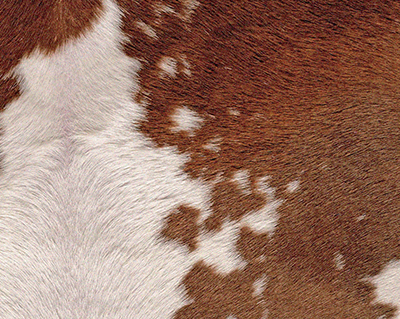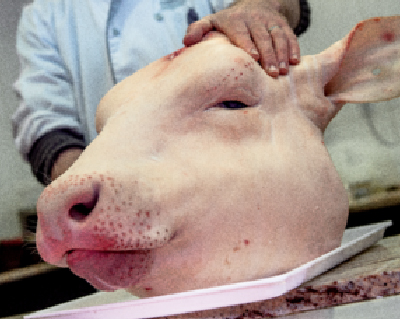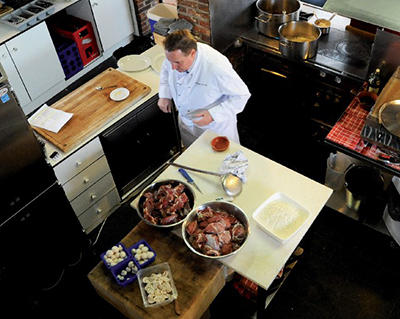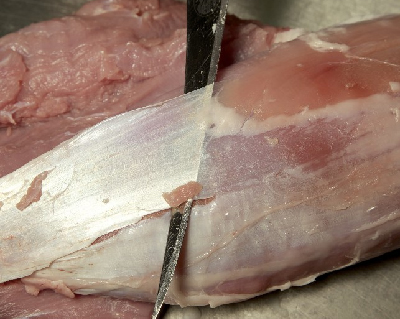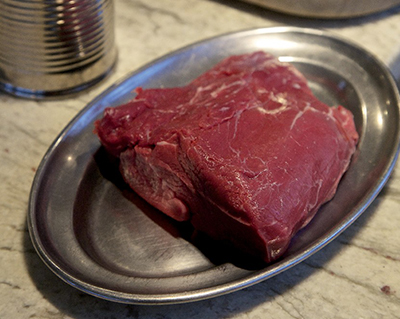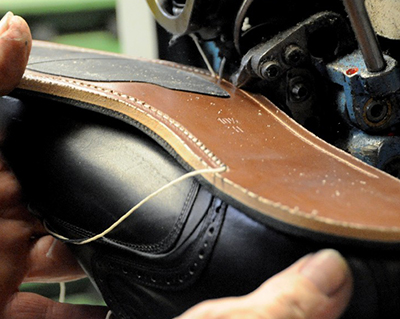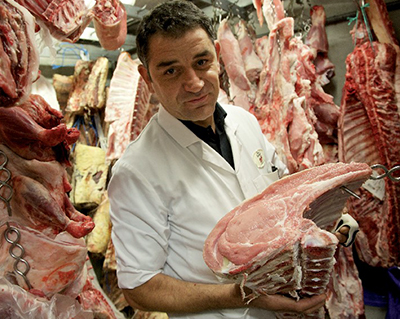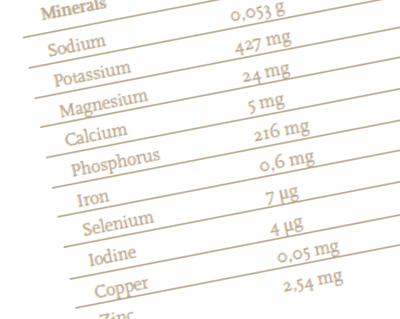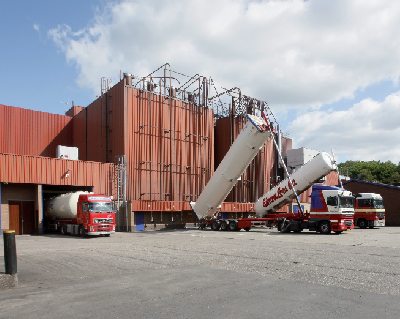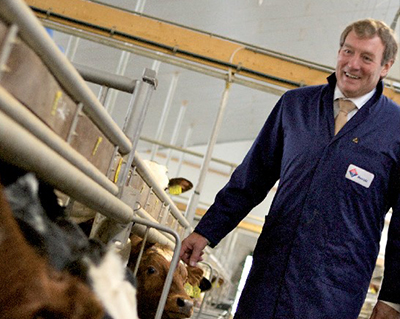After a calf has been slaughtered, its hide is carefully removed to leave as little damage as possible that could diminish its value. Sometimes this is done by hand and some- times by machine. The hides are taken to a specialist company of which there are very few nowadays. However, we were lucky enough to visit Oukro, the largest company in Europe and part of the VanDrie Group. Oukro has the capacity to process 1.4 million hides a year!
Marcel van Leent, director, was proud to be our guide. As laymen on the subject, we prepared ourselves for filth and bad smells, but there was nothing like that at all. The 6500 m2 premises were quite the opposite. Everything is very hygienic.
The slaughterhouse belonging to Ekro on the other side of the road transports its hides using a conveyor belt. Other slaughterhouses bring them in containers holding 1000 hides each. When they arrive, each hide has had one ear left with a yellow ear tag. The ear and the tag are cut off and then the hides are hung on hooks. As far as the eye can see, there are endless rows of hides moving past on hooks. Each hook has a chip with data corresponding to the hide and it is moved past a group of four people sat at different levels. These people remove the tails and any fat residue, and trim the hides so that they are all the same shape. Then at the next station, the hides are given a second, temporary hook to open them up.
They pass an inspection area at high speed where inspectors assess for damage on both sides. The results are tapped into a touch screen which sends the data for the classification straight to the chip in the hook. At this stage, the hides have been classified on quality and are ready to be taken to a large cooling area where they are kept for 30 minutes at 6oC/42oF and then weighed. About 20% of all hides are transported packed in ice chips and kept fresh in coolers for certain clients. The other 80% are sent to the pickling department. Here, they are sprinkled automatically with rock salt (grain size 2-3 mm) and stacked on pallets. Next, the pallets are taken to a separate area to drain for 7-10 days. The salt draws a lot of liquid from the hide during which, the hides lose 15-20% of their weight. The salt is washed out and the hides are folded and stacked before being taken to one of the stock rooms. Each classification category has its own stock room of about 150,000 hides. This is an impressive sight. It might be interesting to know that the hides in Europe are
sold by the kilo and in Asia, individually.
cat. 1 no damage on either side.
cat. 2 minimal damage.
cat. 3 5 to 6 marks.
cat. 4 more or less useless.
Calf hides are divided into four classes of quality: whilst the Oukro factory is almost fully automated, the decisions on quality are still left for people to make.
Small pieces of hide, from the head for example, are treated differently. These are used for making small products like wallets, and are put into tumblers for 2 hours to extract the salt. Most of the time these pieces are exported to China, Thailand and Vietnam along with other lighter-weight hides. European buyers tend to prefer heavier hides. Where do the hides go to next? They go to the tanneries. The purpose of tanning is to stop the proteins in the skin from decomposing. It is a very technical process that involves a lot of chemistry. There are various ways of doing it, but perhaps this is something best dealt with in a different book.
